
Traction In China
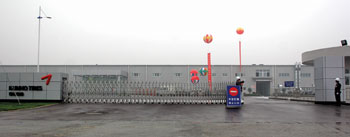
lobal tire manufacturers continue to site production facilities in China to serve that country’s growing demand for tires. Two major names in the business are among companies making major investments.
Korean manufacturer Kumho Tires officially opened its new tire plant in Nanjing, China, on Nov. 7. The company invested US$100 million in the 90,000-sq.-ft. (8,361-sq.-m.) factory.
Kumho’s president and CEO, Sae-chul Oh, said his company is already the largest passenger car tire builder in China, which is a key part of a strategy to become one of the top five global tire makers. China’s truck and bus tire market is expected to grow at a rate of 25 percent to 30 percent annually over the next few years, according to Kumho. The new plant, designed to produce truck and bus tires, will have an annual capacity of more than 300,000 tires.
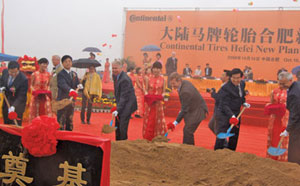
The plant is Kumho’s fourth in China, with other factories in Nanjing, Tianjin and Changchun. Kumho also established an R&D center in Tianjin in 2006.
Continental is building is building a new tire plant in the Hefei New and High Technology Industrial Development Zone in Hefei. The €185-million ($233-million) factory is the first investment by the company’s PLT Division (passenger car and light truck) in China and the largest FDI project ever to locate in Anhui Province. The plant will be completed in 2010 and will have an annual capacity of 4 million tires initially, with long-range plans by Continental to reach 10 million tires per year. Continental, which makes an array of automotive products, already has 18 plants in China, but the Hefei facility will be its first tire production plant in China.
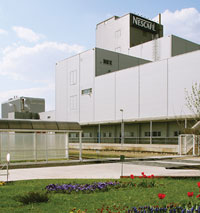
Percolate In Europe
uropeans thirsting for instant coffee will soon have a greater supply as two coffee plant expansions develop.
Nestlé is investing more than $198 million to expand its coffee factory in Timashevsk, Russia. The investment will go into new technologies and process that will result in a significant capacity increase. The factory opened in November 2005 and became the first full-cycle production facility for instant coffee. Nestle has built up a work force in Russia of more than 11,000 employees at 14 production units over the past 14 years producing coffee, chocolate, culinary products and infant nutrition.
In the Netherlands, Sara Lee is investing $80 million in its coffee extraction facilities in Joure, over the next two years. The project will boost the plant’s capacity for producing instant coffee and liquids by 50 percent. Sara Lee expects the new plant to be fully ramped up in 2010, when it will produce instant coffee for the U.K., Australia, Russia and Poland, among other countries.
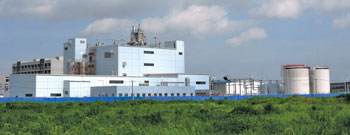
n another indication of the growing Asian automobile market, Invista, one of the world’s largest fiber manufacturers, has opened a new airbag fiber manufacturing in Qingpu District, Shanghai.
Invista’s new $50-million facility is the largest of its kind in China and will manufacture high-tenacity nylon fiber. The plant has an annual capacity of 11,000 tons of fiber.
Invista, which includes many of the fiber manufacturing operations originally developed by DuPont, says it selected Shanghai for the facility because it is close to major automotive supply chains. The new factory makes Invista the only international company with wholly-owned airbag fiber manufacturing on three continents: Asia, Europe and North America.
Invista, the world’s largest producer of nylon and spandex, already has a major presence in China with wholly-owned or venture manufacturing sites in Foshan, Guangdong province, Qingpu, Shanghai and Lianyungang, Jiangsu province, producing spandex and nylon fibers. Invista’s other projects include a new textile research center being constructed in Shanghai, an expansion of spandex operations in Foshan, and plans for the establishment of a nylon intermediates plant in Shanghai.
The China Textile Research Center, under construction in the Qingpu District of Shanghai, is due to open in May and will serve customers across Asia. It will be Invista’s third textile research center and will focus on application of new fiber and fabric.
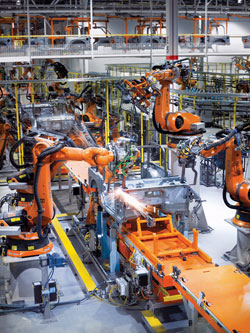
he International Federation of Robotics reports that about 1 million industrial robots and 5.5 million service robots were operating globally in factories, dangerous environments, hospitals, public buildings and other areas at the end of 2007. The report, released in mid-October, says more than 114,000 new industrial robots were installed worldwide in 2007, a growth rate of 3 percent. In terms of value, the market grew by 11 percent to nearly $6 billion.
The IFR reports that growth declined in Asia, recovered in the Americas, and continued in Europe.
Robot investment is still booming in China, with 6,600 units supplied in 2007, an increase of 14 percent. Demand is increasing in all industries in China, including the automotive sector.
About 19,600 industrial robots were supplied to the Americas during 2007, an increase of 9 percent. Strong demand from the motor vehicle industry in the U.S. and Canada was the main reason. Much of the increase was due to investment by foreign automakers.
IFR says robot shipments rose during the first half of 2008 by 8 percent, but predicts the worsening global economic outlook will affect installations in 2009 and probably in 2010. However, IFR does not anticipate a sharp decrease, as industrial robots are a key component in automating processes.
broke ground in November for a new factory in Tianjin, China, that will produce JLG access equipment for the Asian market.
The facility is Oshkosh’s first in China. JLG Industries is an Oshkosh division that manufactures aerial work platforms and other accessories.
“The facility we are building in Tianjin is a strategic initiative to directly service regional customers with a faster delivery turnaround for our JLG brand of aerial work platforms,” said Robert G. Bohn, Oshkosh chairman and CEO. “This locally-produced product will give Oshkosh a distinct strategic advantage in a very aggressive, competitive Asian landscape. JLG product made at the Tianjin facility will be targeted for the China and Asian markets and be a complement to other JLG manufacturing facilities which build products for the rest of the world.”
Due to competitive concerns, Oshkosh declined to reveal the size of the new plant or the number of employees it will have.
Site Selection Online – The magazine of Corporate Real Estate Strategy and Area Economic Development.
©2009 Conway Data, Inc. All rights reserved. SiteNet data is from many sources and not warranted to be accurate or current.